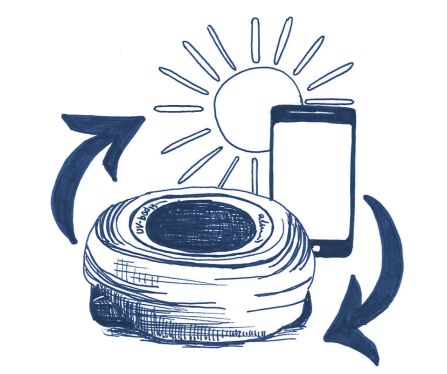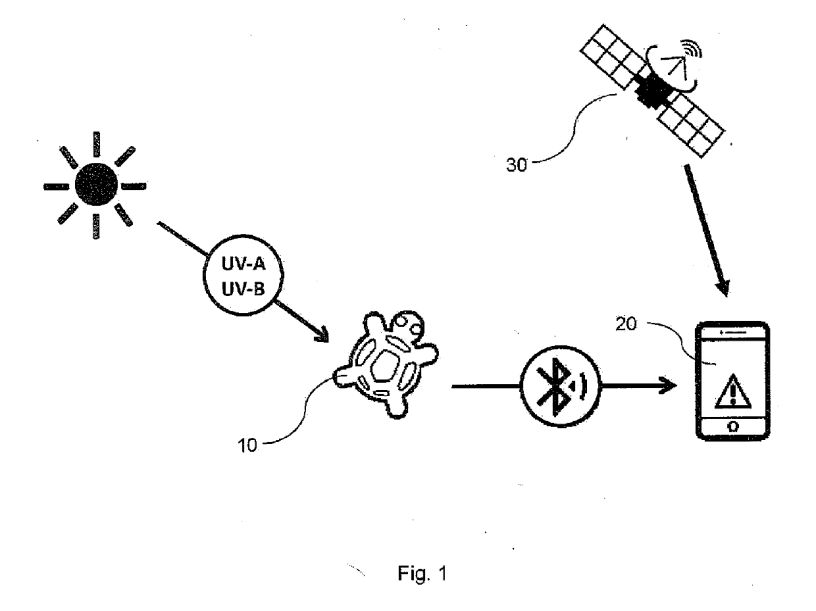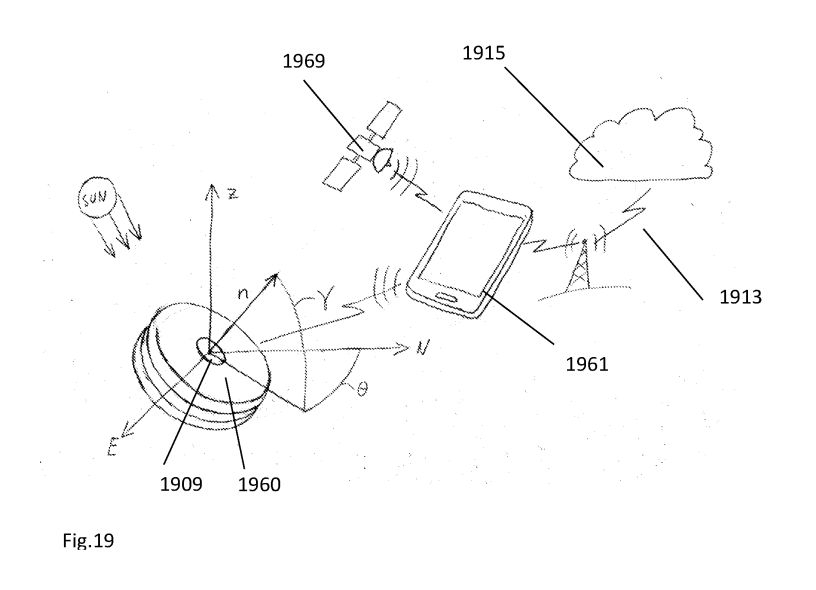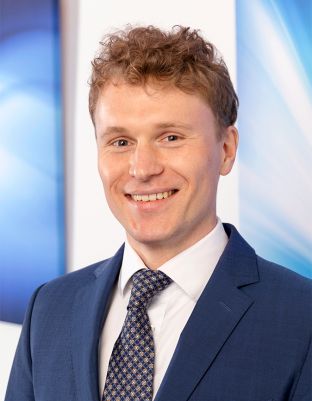
In season 9, episode 7, of the TV show "Die Höhle der Löwen" (German version of the US show Shark Tank and the UK show Dragon's Den), a young startup, ajuma GmbH from Munich, presents a UV tracker called "UV-BODYGUARD", whose target group is outdoor enthusiasts and athletes.
A European patent application has been filed for the UV-BODYGUARD. Based on the UV-BODYGUARD, a brief insight into so-called software patents will be given. In particular, it will be shown how software-related features can contribute to the delineation from prior art.
Preliminary remark: Software inventions are often regarded as not patentable by laypersons. This is true insofar as programs for data processing equipment are not considered inventions under Art. 52 EPC. However, this only applies to these programs as such.
The product: UV-BODYGUARD – What is it about?
The UV-BODYGUARD is a small portable UV tracker (in other words, a portable technical measuring device) that connects via Bluetooth to an associated UV-BODYGUARD APP on a smartphone and continuously measures UV radiation in real time. In doing so, the UV-BODYGUARD helps prevent sunburn and improve vitamin D levels. In particular, a user profile, skin type and sun protection factor can be customized in the app, and the UV dose can be reflected in real time.
European patent application – EP3842770 (EP'770)
Protected Subject-matter
Originally, it was attempted to protect the UV-BODYGUARD by three independent claims, one claim to a system for determining a UV exposure, and two claims 10 and 15 to various methods.
Claim 1 of EP'770 defines the following features (cf. reference signs in parentheses in Fig. 1 of EP'770 below):
M1: A system for determining a UV exposure, comprising:
M1.1: a portable device (10) comprising a UV detection unit adapted to detect UV radiation irradiated to the UV detection unit,
M1.2: a data processing unit (20) adapted to receive at least one measured value of the detected UV radiation from the device,
M2: wherein the data processing unit is further adapted to receive, from a remote server, an ozone value related to the stratospheric ozone situation for a location where the UV detection unit is located,
M3: characterized in that the data processing unit (20) is adapted to determine a UV exposure value based on the detected UV radiation and the ozone value and to process it for informing a user.

Fig. 1 – drawing from EP3842770
Note: The two independent method claims were dropped in the course of a lack of unity objection, but could be pursued in a divisional application as long as the present parent application is pending. These two claims are not further discussed herein.
Prior Art
In the examination proceedings before the EPO, the examiner cited only D1 (WO 2018/208166 A2) as being novelty-destroying for the subject-matter of claim 1 of EP'770.
D1 (WO 2018/208166 A2)
D1 includes a wearable device 1960 with UV sensor 1909 and a smartphone 1961 of the following type connected by Bluetooth (cf. pages 19 and 20 of D1; and Fig. 19 of D1 as shown below):

Fig.19 – drawing from WO 2018/208166 A2
The smartphone receives data on regional ozone layer concentration, pollution, clouds, haze, and related UVI-forecasts provided by meteorological organizations. This data is run through a sensor-specific algorithm to correct the sensor values provided by the UV sensor 1909.
Thus, the scenario disclosed in Fig. 19 of D1 is similar to the subject-matter of claim 1 of EP'770.
Therefore, original claim 1 of EP'770 is not novel over D1.
Delineation from prior art – D1
A core idea of the UV-BODYGUARD is to use a transfer function for UV radiation, ozone value and solar elevation value in the time-related determination of the UV exposure value (cf. original claims 2 and 3 of EP'770).
Here, the transfer function is related to a trained neural network (see, for example, paragraph [0013] of EP'770).
D1, on the other hand, describes that the algorithm must be sensor-specific (cf. lines 19 and 20 on page 19 of D1). This means that neither the transfer function nor the corresponding training is described in D1.
Note: Even if this could effectively delimit the prior art cited in the proceedings up to this point, it is the responsibility of the examiner to conduct an additional search with respect to this new delimitation. In doing so, further relevant prior art may be introduced into the proceedings, which may necessitate the incorporation of further delimitating feature(s) in the claims.
Software as a distinguishing feature
As a consequence of such an amendment, the claims of EP'770 would differ from the prior art D1 by a software-side implementation ("trained neural network").
In the present case, the use of a neural network-based transfer function has the advantage that it can be used flexibly for all types of sensors, in contrast to D1, where the algorithms are sensor-specific (cf. lines 19 and 20 on page 19 of D1).
Consequently, EP'770 proposes an improved determination of the UV exposure compared to D1.
As a result, it is precisely the software used in the UV-BODYGUARD that effectively distinguishes it from the prior art D1. Therefore, a European patent could be obtained for the UV-BODYGUARD, by means of this small amendment to claim 1 of EP'770.
Conclusion
The boundaries between patentable software and non-patentable software are fluid and can therefore usually be set through the formulation of a technical application and its computer implementation. Thus, the case may arise that a grant and a rejection are obtained for the same invention with different fields of use. Thus, patent applications for software are not per se excluded from patent protection. Rather, they are patentable when concerning a specific technical application by use of technical means. It therefore depends decisively on the specific application and its appropriate claim wording.
Basic rule: Software directed to a new technical application and its implementation by a computer is patentable.
The likelihood of success that an invention based on software is patentable is therefore usually higher than assumed by the average inventor. Thus, in the case of the UV-BODYGUARD in the European proceedings, our assessment is that a grant is possible and probable on the basis of the software-based distinguishing feature alone.
With such a scope of protection – from our point of view – competitors could be effectively prevented from imitating the UV-BODYGUARD.
Author: Julian Graf
German and European Patent Attorney
Disclaimer: The above contribution reflects the personal opinion of the author. The assessments and statements made in the article do not constitute legal advice and are provided under exclusion of any liability. If you need an assessment of an individual case, please contact the author and/or the law firm KUHNEN & WACKER.


